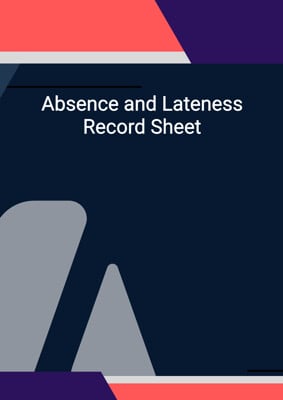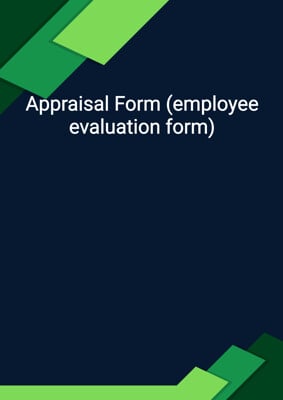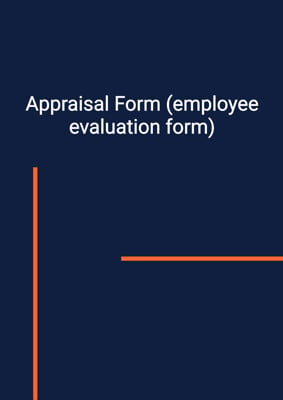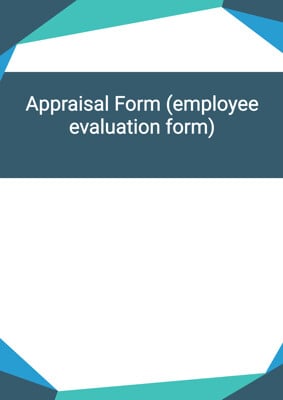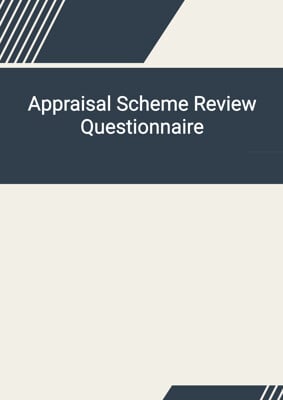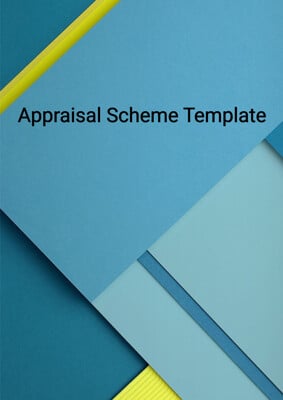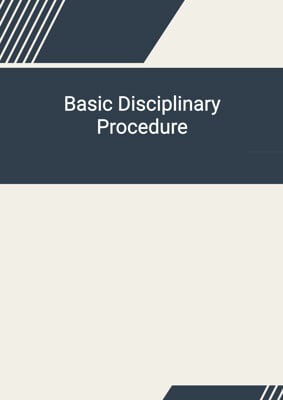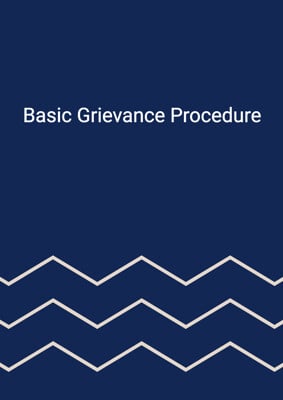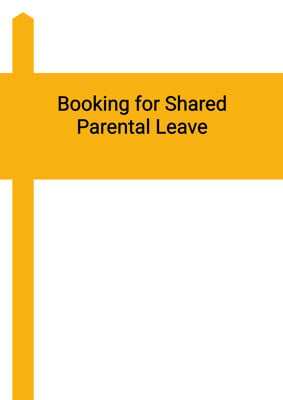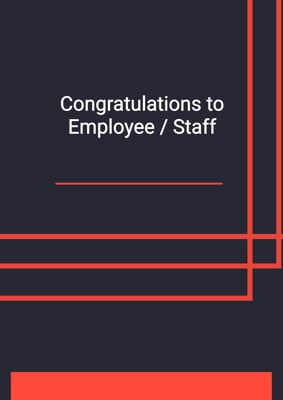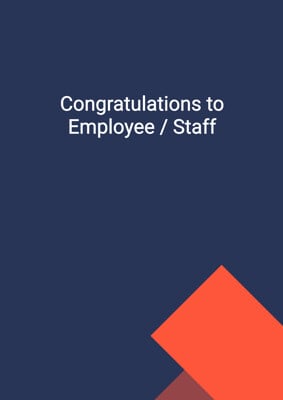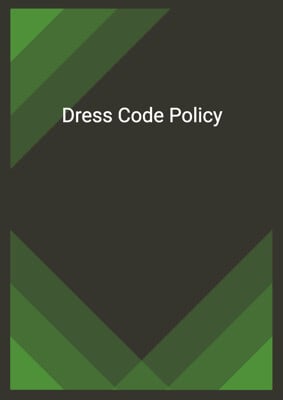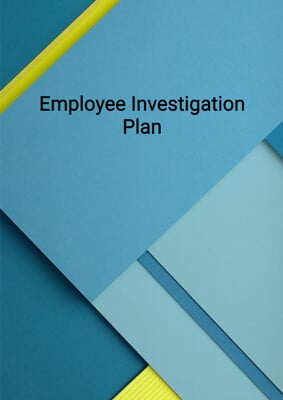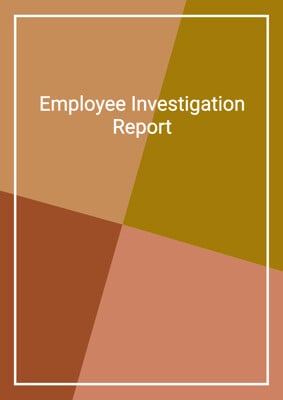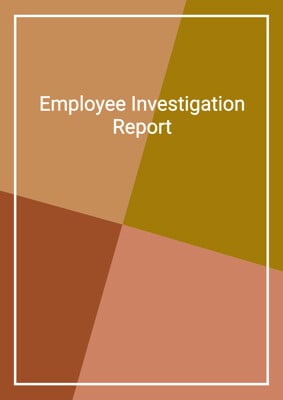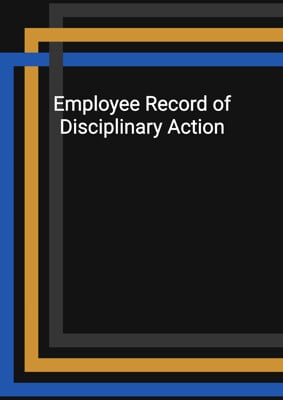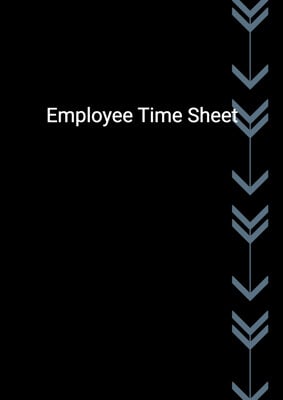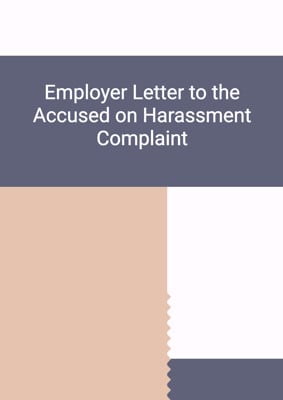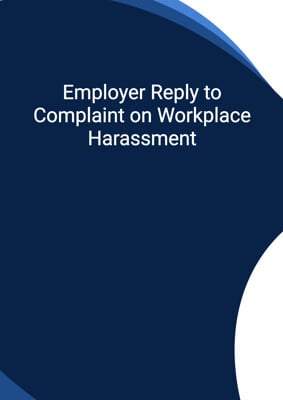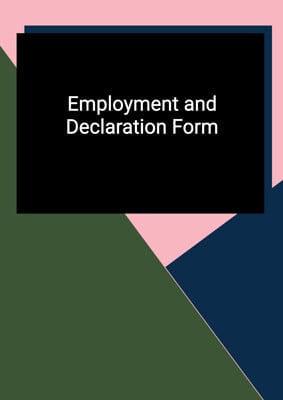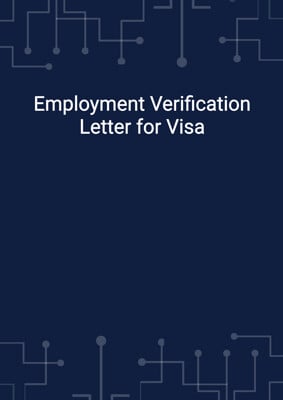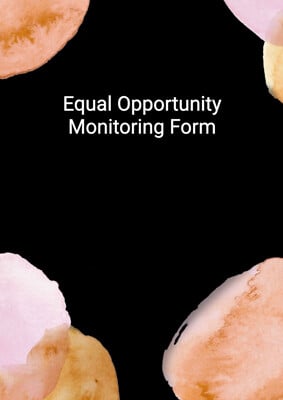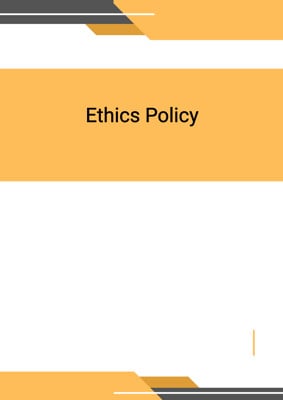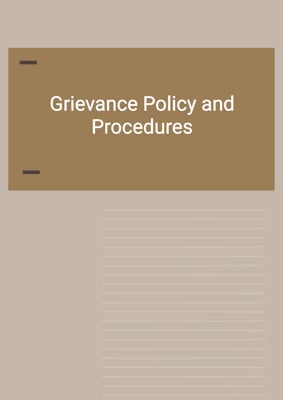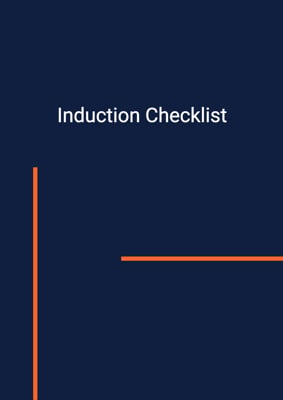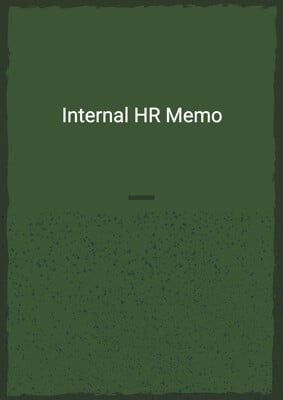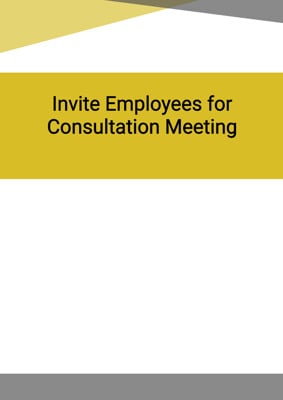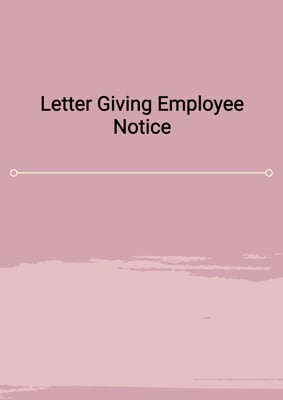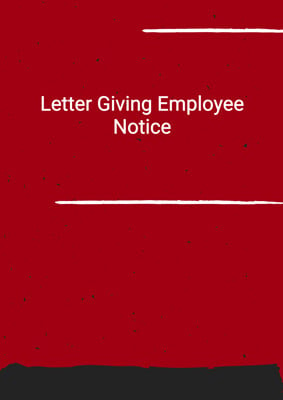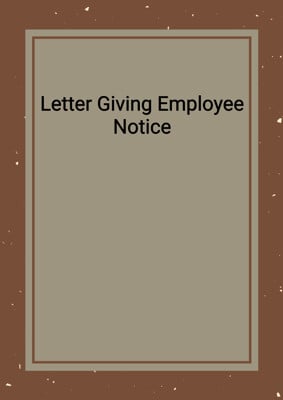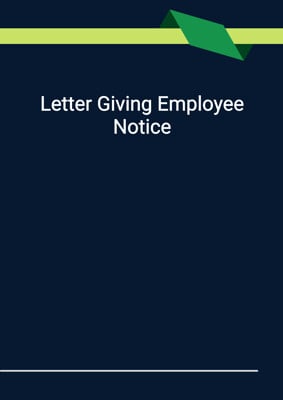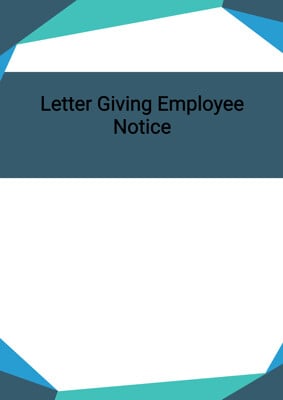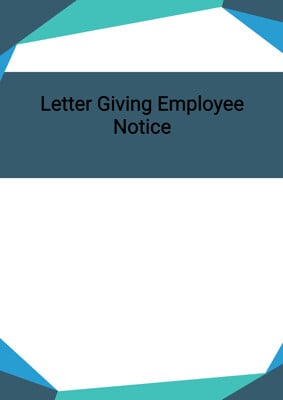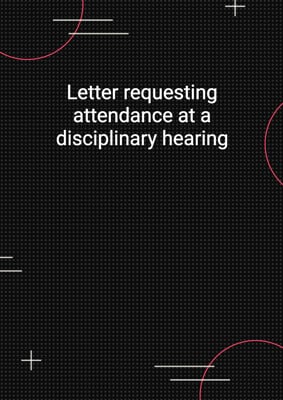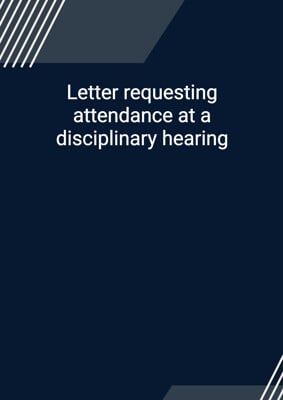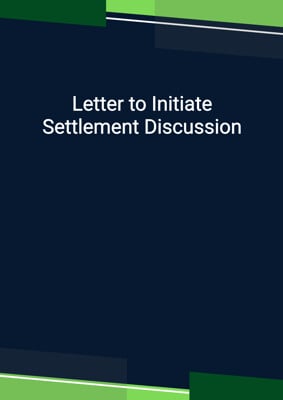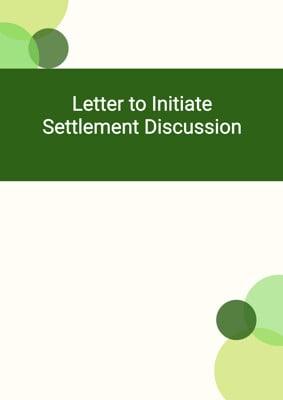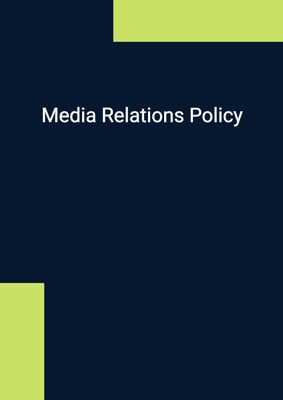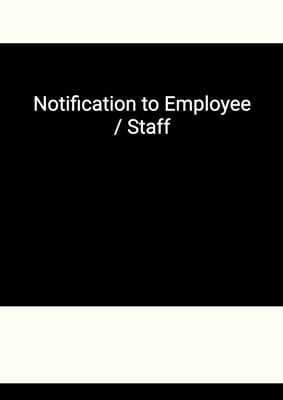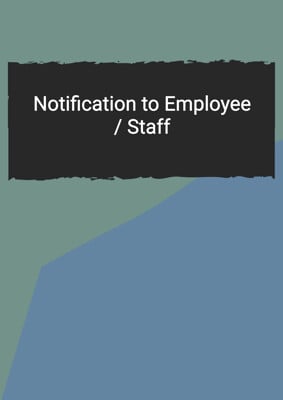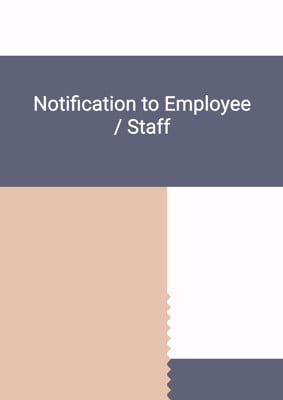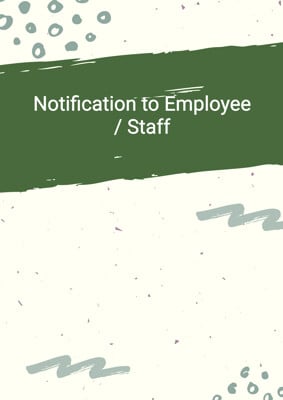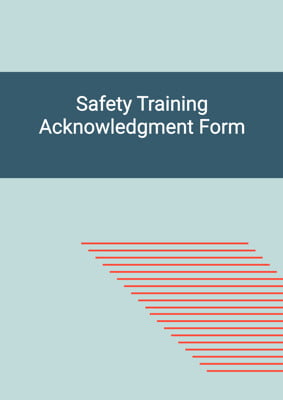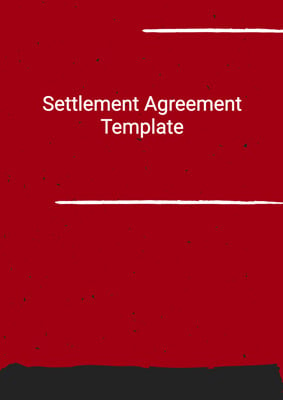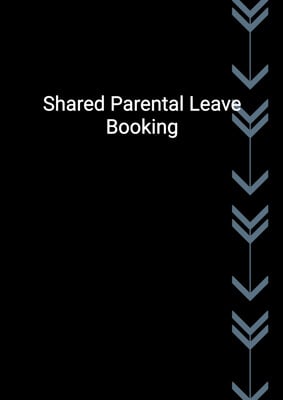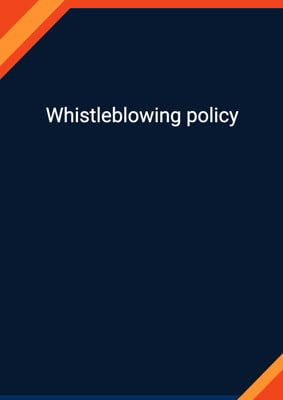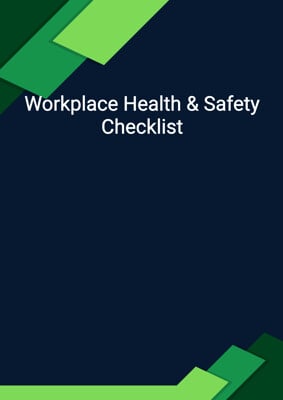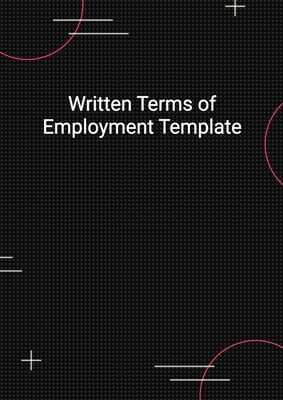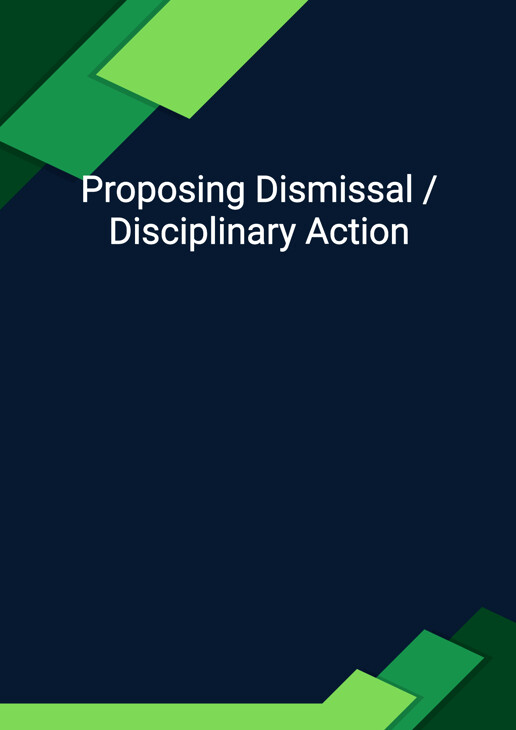
Proposing Dismissal / Disciplinary Action
Misconduct/Redundancy/Lay-Off
This document can be used as a template for the investigator / HR department to propose / notify the employee of the disciplinary or dismissal actions. It sets out the particulars of the matter being investigated and the time and location of the investigation meeting.
How to Tailor the Document for Your Need?
01
Create Document
Click "Create Document" button and the document will be prepared with your account details automatically filled in.
02
Fill Information
Please fill in any additional information by following the step-by-step guide on the left hand side of the preview document and click the "Next" button.
03
Get Document
When you are done, click the "Get Document" button and you can download the document in Word or PDF format.
04
Review Document
Please review the document carefully and make any final modifications to ensure that the details are correct before publication / distribution.
Document Preview
Document Description
The document titled 'Proposing Dismissal / Disciplinary Action' is an important document that outlines the intention of the company to dismiss or take disciplinary action against an individual. It serves as a formal communication to inform the recipient about the circumstances that have led to this consideration.
The entire document consists of several sections that provide specific information. The first section includes the account details of the individual, such as their first name, last name, job title, and address. This information helps in identifying the person to whom the document is addressed.
The next section includes the current date, followed by a salutation addressing the recipient as 'dear sir/madam.' This sets the tone for the rest of the document and establishes a formal approach.
The main body of the document starts with a statement that the company is considering dismissing or taking disciplinary action against the recipient. It emphasizes the seriousness of the situation and the need for the recipient's attention.
The document then mentions that the action is being considered based on specific circumstances, which are not mentioned in the document itself. This creates a sense of anticipation and curiosity for the recipient, making them more likely to attend the disciplinary meeting.
The next section informs the recipient about the disciplinary meeting, including the date, time, and location. This ensures that the recipient is aware of when and where the meeting will take place.
The document also mentions that the recipient has the right to be accompanied by another work colleague or a trade union representative. This highlights the importance of having support during the meeting and ensures that the recipient is aware of their rights.
The document concludes with a closing salutation, 'yours sincerely,' indicating a formal and professional tone.
Overall, the 'Proposing Dismissal / Disciplinary Action' document is crucial in communicating the company's intention to take disciplinary action against an individual. It provides a detailed introduction, highlighting the importance of the document and each section within it.
How to use this document?
1. Provide account information: Fill in the first name, last name, job address, and single line address of the account in the designated fields. This ensures accurate identification of the individual.
2. Specify the current date: Enter the current date in the designated field to indicate the date of writing the document.
3. Address the recipient: Use the salutation 'dear sir/madam' to address the recipient in a formal manner.
4. State the purpose: Clearly state that the company is considering dismissing or taking disciplinary action against the recipient. This conveys the seriousness of the situation.
5. Explain the circumstances: Provide specific details about the circumstances that have led to the consideration of disciplinary action. This helps the recipient understand the reasons behind the action.
6. Schedule a disciplinary meeting: Mention the date, time, and location of the disciplinary meeting. This ensures that the recipient is aware of when and where the meeting will take place.
7. Inform about accompaniment rights: Mention that the recipient has the right to be accompanied by a work colleague or trade union representative. This ensures that the recipient is aware of their rights and can seek support during the meeting.
8. Conclude with a closing salutation: End the document with a closing salutation, such as 'yours sincerely,' to maintain a formal and professional tone.
Note: The content of the guidance focuses on the practical steps and implications of using the document, rather than completing the document itself.
Not the right document?
Don’t worry, we have thousands of documents for you to choose from:
